NIKKOR - The Thousand and One Nights No.51

Nikon Soft Focus Filters Soft 1 and Soft 2
Tale 51 is about filters. While you may think that "NIKKOR" does not apply to filters, as a matter of fact, filters developed by Nippon Kogaku were marketed with the name Nikkor Filter. If we follow the history of the development of filters at that time, the names of past lens designers pop up one after the other. You may say that filters are "just filters", but they should not be so readily dismissed. This is because filters manufactured by Nikon are marketed based on the same refined design concept as NIKKOR lenses.
This tale presents Nikon soft focus filters, which offered very distinct characteristics. These soft focus filters were manufactured using unique technologies not used with other types of filters. Let's take a look at the thoughts of the designers, and episodes that arose, in the development of soft focus filters. What were the objectives of the designer? Is the essential rendering of these filters pleasing?
This tale brings the secrets of Soft Focus Filters to light.
by Haruo Sato
I. What is soft focus?
Normally, sharp and clear rendering is preferred for photographic lenses. However, lenses that ensure sharp focus are not always best for portraits and photography of articles or goods. Lenses, such as Micro NIKKOR lenses, capable of faithfully reproducing every pore on a human face sometimes reveal blemishes or flaws in the photographic subject. In cases like this, soft focus lenses or filters are often preferred. The primary characteristic of soft focus is that resolution is slightly blurred in portions that are in sharp focus. Contrast is also reduced, and flare is used to create a veil effect in resulting photographs.
Soft focus lenses have a long history. The first soft focus lens that I know of was the Verito Diffused Focus 6 inch f/4, released by the American company, Wollensak, in 1920.
This lens, constructed of three elements in two groups, utilized existing aberration to soften photographs. By allowing aberration, including spherical aberration, to remain, flare was generated optically. This lens is considered the father of current soft focus lenses. The primary feature of soft focus lenses is their ability to generate beautiful flare that softens portions that are in-focus, and blur characteristics, or bokeh, in portions that are out-of-focus. They also offer a very deep depth of field. Another feature of these lenses is that the degree of softening can be reduced by stopping down the aperture, for results similar to those achieved with a lens that offers sharper rendering. With soft focus lenses, the aperture setting has less to do with exposure than it does with adjusting the degree of softening performed.
II. What is a soft focus filter?
Attachments (filters) that soften focus also have a long history. Softening techniques first used in the film and commercial photography industries took the world by storm. Originally, the end of the lens was covered with a gauze-like material to create a softening effect. It is thought that soft focus filters were the result of the further development of this technique.
While soft focus lenses use spherical aberration to generate flare, soft focus filters used tiny scratches or lenses formed with an uneven texture similar to drops of water on a smooth surface to generate flare.
However, the scratches or uneven texturing on the surface of filters are reflected as pupil shadow. Therefore, the scratches or unevenness are visible in bokeh. This can be clarified if we look at point image intensity distribution. Point image intensity distribution generates great peaks and lows, as well as edges, in the flare generated, even at the image point.
This phenomenon is an important factor with what is known as double-line bokeh. What's more, this tendency occurs with both foreground and background blur. This is one of the drawbacks of soft focus filters. As soft rendering is what photographers are really looking for, bokeh degradation is the flaw to be most avoided.
In addition, soft focus filters differ from soft focus lenses in that they do not change depth of field. In short, a softening effect can be achieved with shallow depths of field. This can be considered an advantage. As depth of field increases when the aperture is stopped down, using smaller aperture settings enables rendering similar to that of a soft focus lens. Another drawback of soft focus filters is that it is difficult to adjust the degree of softening. Therefore, the optimal degree of softening must be specified from initial creation of the filter. These filters must be designed with consideration of optimization to achieve the preferred degree of softening.
III. Characteristics of Nikon Soft Focus Filters, Soft 1 and Soft 2
What are the primary characteristics of Nikon's soft focus filters? Teruyoshi Tsunashima is the father of Nikon's soft focus filters. He was also a designer of NIKKOR lenses, and his name often appears in NIKKOR The Thousand and One Nights tales. At Nikon, even filters were developed by top-of-the-line optical designers. It seems that the passion predecessors held for the products they developed was carried on.
Actually, chemical processing rather than surface processing was used for Nikon's soft focus filters. Tsunashima's development group requested chemical processing technologies as the means of generating flare without pupil shadow. This method is known as the ion exchange method. First, a substance that contains sodium oxide is selected for the filter glass. Silver is applied to the surface of the glass. Under certain conditions, this silver ionizes. An ion exchange between silver ions and sodium ions takes place.
When this happens the refractive index for portions with which ions were exchanged changes, and refractive-index distribution similar to that of a so-called Graded Index (GRIN) lens is generated. As ionization is repeated, changes in the refractive index also occur repeatedly. As a result, the ideal amount of flare is generated. Therefore, optical glass that costs several times more than the inexpensive glass commonly used for filters is used. Glass that easily generates sodium ions is necessary. The amount of flare generated, in other words, the degree of softening, is determined by the way in which ionization progresses. The Soft 1 filter was designed to offer a low degree of softening while the Soft 2 filter offered a higher degree of softening, and production was controlled according to the MTF (modulation transfer function) extinction ratio for both products. At a time when MTF measurement devices were quite rare, Nikon's soft focus filters were at the forefront of technology. What's more, Nikon applied for a patent on this technology in Japan in 1972 and in the U.S. in 1973. This was the moment when the world learned of Nikon's invention.
Tsunashima must not have been able to permit the drawbacks of previous soft focus filters. The objective with Nikon's soft focus filters was to achieve true soft focus, rather than imitating it, with technologies never used before.
Let's take a look at the quality assurance department's test report issued with development of the filters. Some of the filters' features are noted in the report's conclusions.
- 1.Flare occurs with a core for good resolution.
- 2.There was little reduction in the effects of flare, and they remained relatively great, even with smaller apertures.
- 3.There was no color cast to the flare. It was close to white.
- 4.Resolution was superior to that of other soft focus filters.
- 5.There were no particular problems with color tones, color bleed, or bokeh.
Tsunashima's objective was to preserve the superior resolution of the master lens while achieving beautiful flare formation and pleasing bokeh. He wanted true soft focus, not effects on a level normally attributed to attachments. As the surfaces of these soft focus filters were not uneven or scratched, shadows were visible in bokeh and it was not inhibited. These filters offered results closest to those achieved with soft focus lenses.
IV. Development history
Now let's follow the history of development. Nikon soft focus filters were developed by the previously introduced Teruyoshi Tsunashima, whose name often comes up in NIKKOR The Thousand and One Nights tales. Research into soft focus was a major theme in Tsunashima's work for many years.
Let's look at development reports and drawings. According to reports, trial production drawings were first released in early summer 1977. Later in that same year, trial production began and the filters passed evaluations. At the end of the year, the mass production plan was issued and mass production began. Development took a very short amount of time. In looking at materials from that time, we see just how passionate Tsunashima was about soft focus. This filter was Nikon's, or rather Tsunashima's, response to issues surrounding soft focus. These filters must have showed satisfactory performance.
V. Development of Nikon Soft Focus Filters
Many of you are surely aware of the Restriction of Hazardous Substances Directive (RoHS), the directive on the restriction of the use of certain hazardous substances in electrical and electronic equipment, adopted by the European Union in 2003. The RoHS directive took effect in 2006. As cameras and lenses also fall under the jurisdiction of this directive, this caused a great commotion among Japanese manufacturers of optics, cameras, and glass. A general reform in the materials used for optical glass were especially important to make these glasses lead and arsenic free. Glass manufacturers responded very quickly. As a result, Nikon was obliged to redesign all of its products. The materials used in the optical glass in Nikon soft focus filters Soft 1 and Soft 2 had to be modified. However, this caused a huge problem. Filters manufactured using the ion exchange method contain sodium and the like, and therefore require different characteristics than those of normal optical constants, including refractive index and dispersion. In hurried experiments with new optical glasses that did not contain lead or arsenic, it was concluded that ion exchange was impossible. These unique soft filters could no longer be made.
Those concerned were at a loss, and we were obliged to halt production.
I certainly did not want to lose these soft focus filters. So, I began developing a method other than ion exchange for the filters. I researched a number of possible alternatives with which the characteristics of the original Nikon Soft Focus Filter Soft 1, including good resolution, the optimal amount of flare with no color cast, and pleasing bokeh, could be preserved as much as possible. Development began in early summer 2005. The result was Nikon's New Soft Focus Filter. It was released in the spring of 2007. While a surface processing technique was applied to the glass used in this filter, making the size of micro lenses as small as we could preserved the previously mentioned bokeh shadows as much as was possible. What's more, in comparing the characteristics of the new filter with those of the original filters, we see that the appearance of flare, resolution, and the like are very similar. Take a look at the sample images (Sample 1, Sample 3) for yourself. I sincerely hope that you will consider using Nikon's New Soft Focus Filter in place of the original soft focus filters.
VI. Actual performance and sample images

Nikon D800, AF-S NIKKOR 58mm f/1.4G with Soft 1 Filter
Aperture: f/2.8, Shutter speed: 1/125 s
ISO sensitivity: 720
Image quality: RAW
White balance: Auto
Picture Control: Portrait
Shooting month: November, 2013
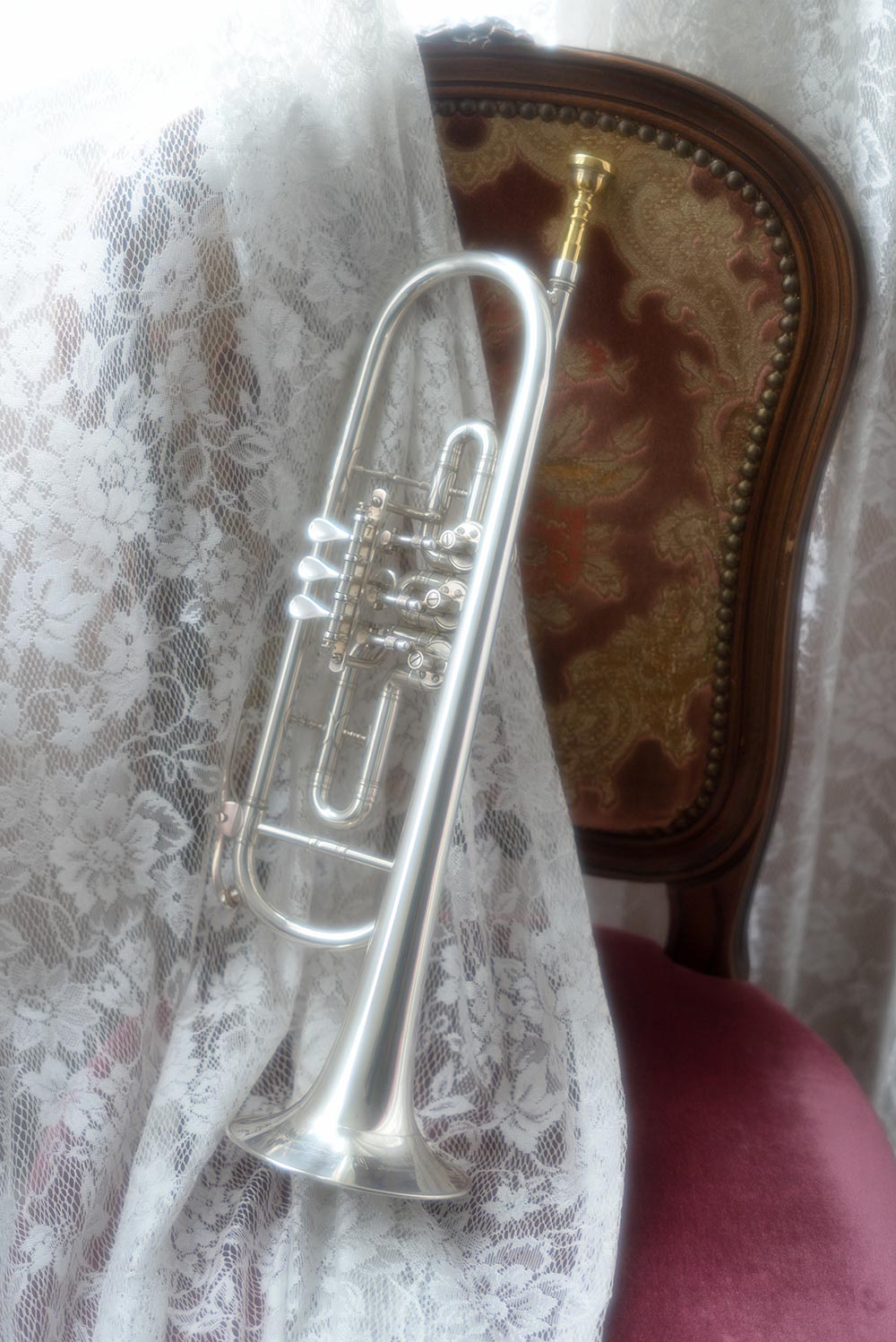
Nikon D800, AF-S NIKKOR 58mm f/1.4G with Soft 2 Filter
Aperture: f/2.8, Shutter speed: 1/125 s
ISO sensitivity: 800
Image quality: RAW
White balance: Auto
Picture Control: Portrait
Shooting month: November, 2013
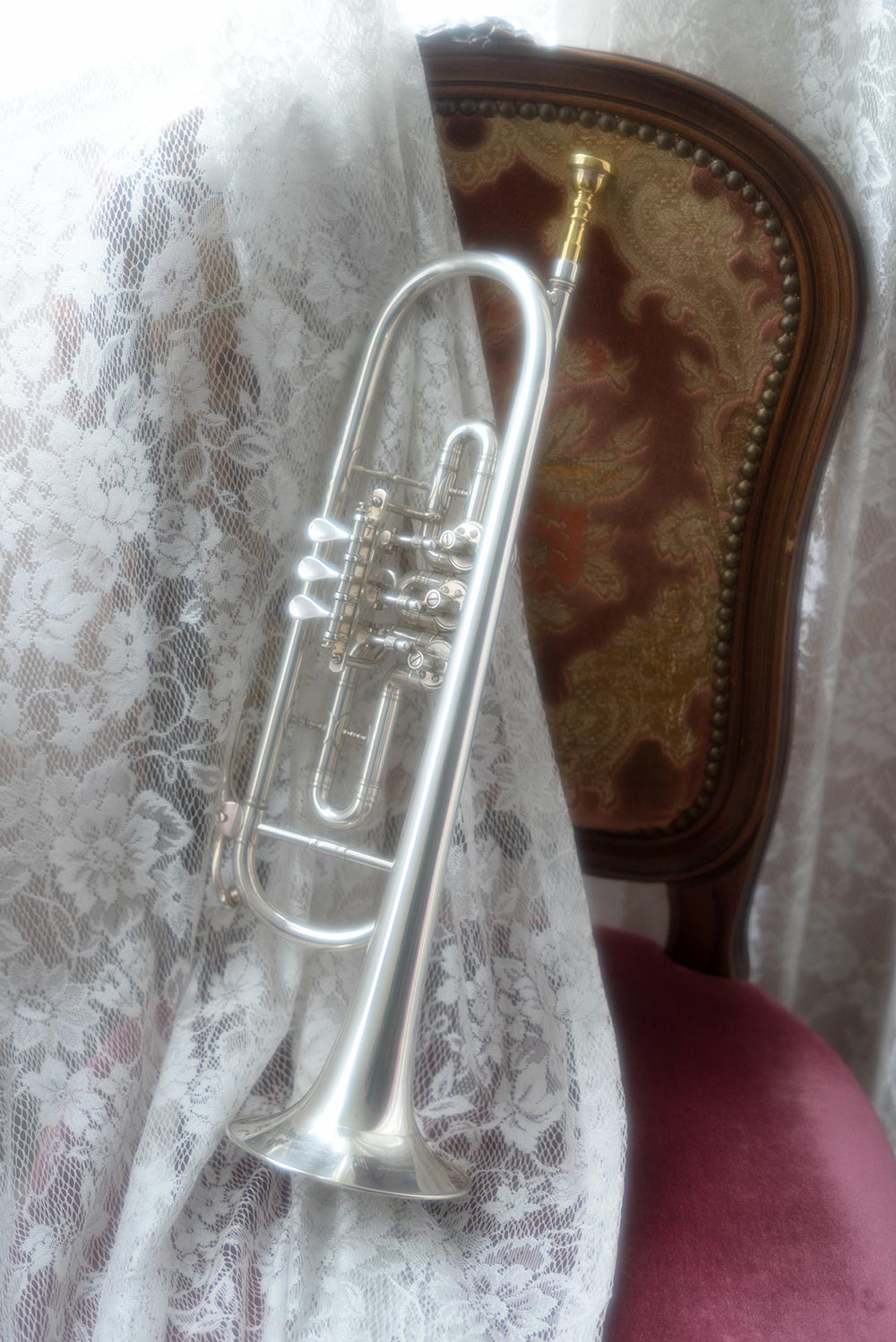
Nikon D800, AF-S NIKKOR 58mm f/1.4G with New Soft Focus Filter
Aperture: f/2.8, Shutter speed: 1/125 s
ISO sensitivity: 800
Image quality: RAW
White balance: Auto
Picture Control: Portrait
Shooting month: November, 2013
Next let's look at some actual results.
Samples 1, 2, and 3 are photos of objects taken using the Nikon Soft 1, Soft 2, and New Soft Focus Filters. All of the filters soften images with beautiful flare exhibiting no color cast in highlights. Another characteristic that should definitely be mentioned is the superior resolution. Take a look at rendering in the chair and curtains. I think you will see that resolution that far exceeds that of other soft focus filters is preserved. The Soft 2 filter exhibits more flare (greater degree of softening) than does Soft 1, making it optimal for scenes like that in these sample images. Now look at the Soft 1 and New Soft Focus Filter sample images. I think you'll agree that the results are quite similar. I think it can safely be said that the new filter inherits its rendering characteristics from the original soft focus filter.
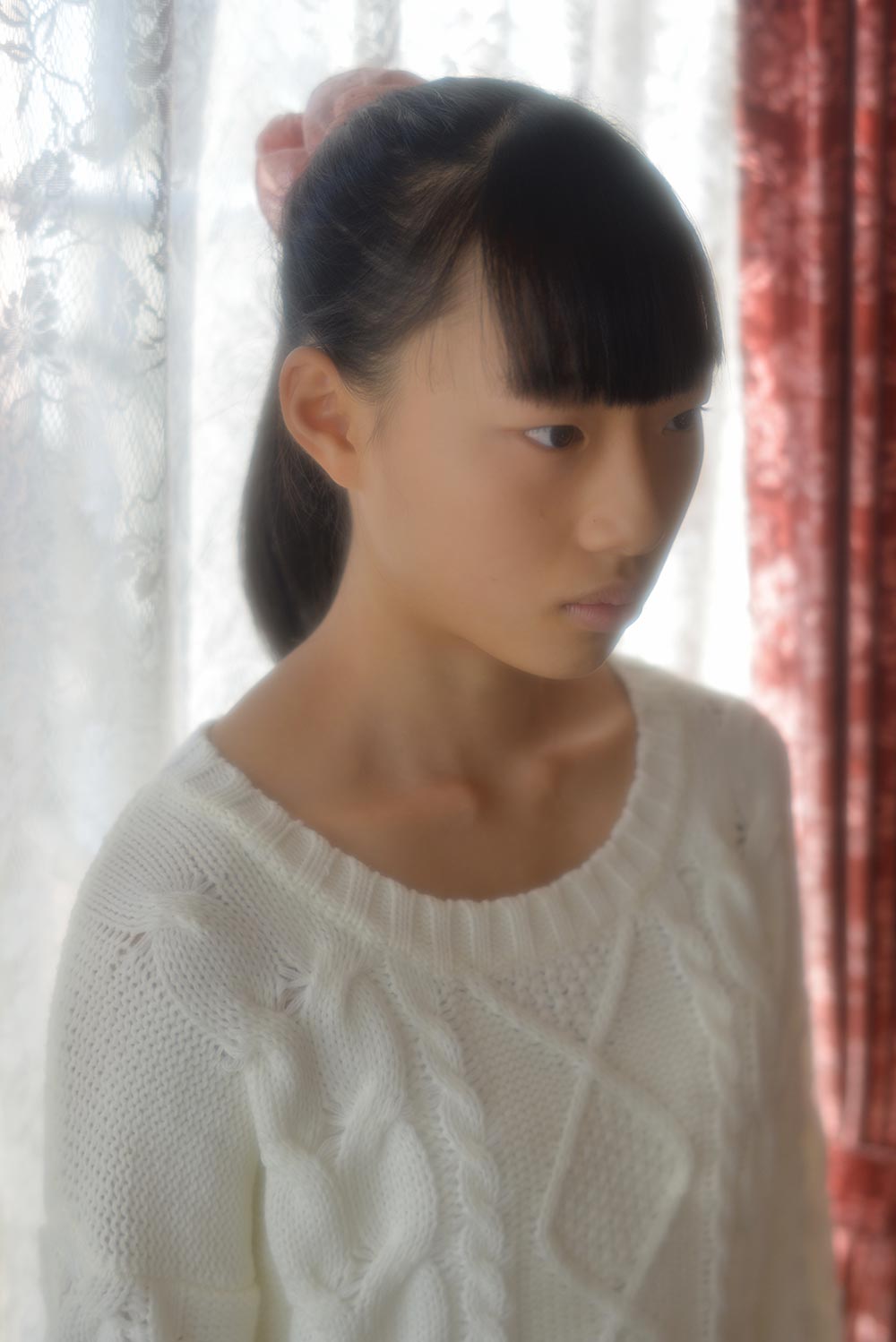
Nikon D800, AF-S NIKKOR 58mm f/1.4G with Soft 1 Filter
Aperture: f/2.8, Shutter speed: 1/640 s
ISO sensitivity: 200
Image quality: RAW
White balance: Auto
Picture Control: Portrait
Shooting month: November, 2013
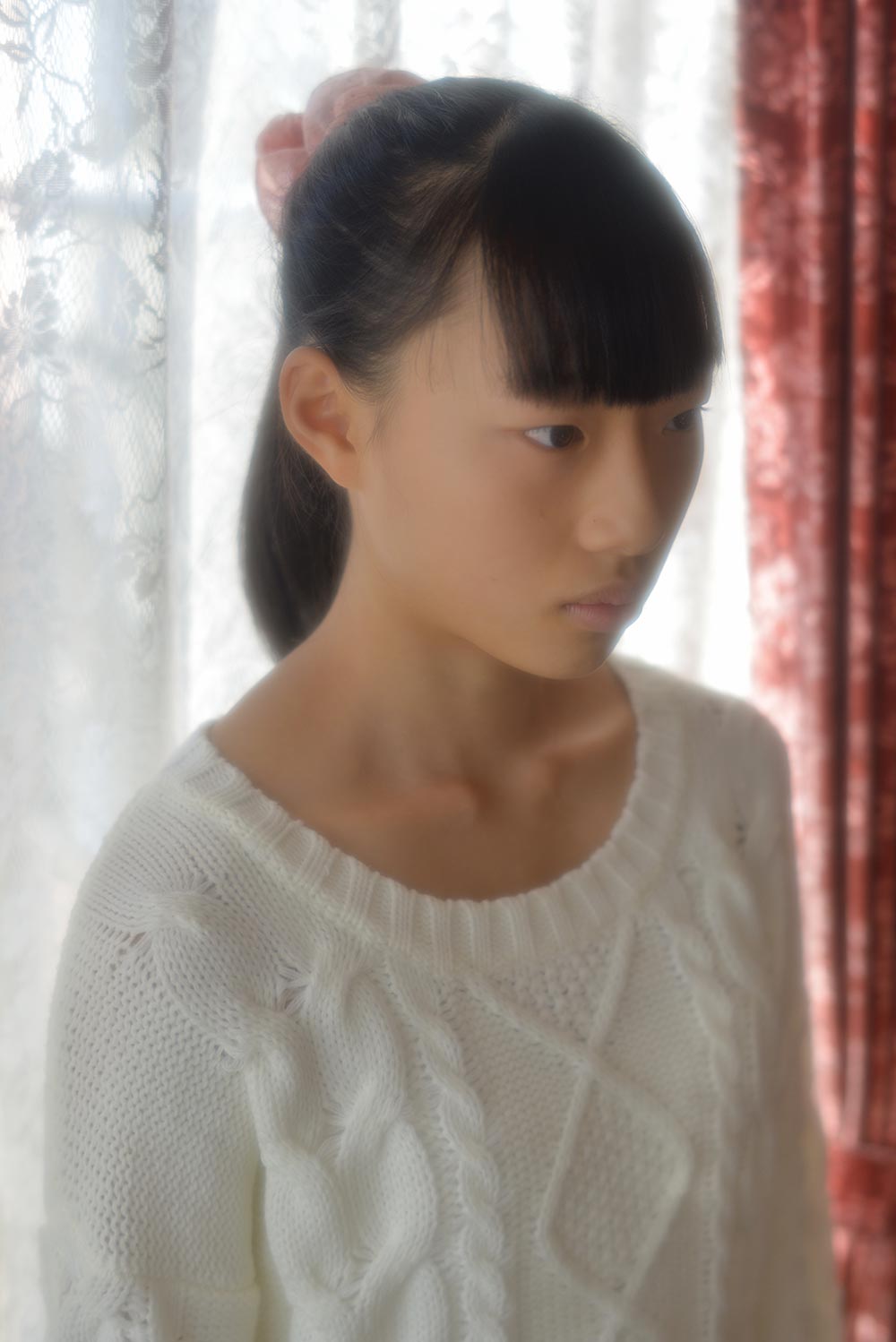
Nikon D800, AF-S NIKKOR 58mm f/1.4G with Soft 2 Filter
Aperture: f/2.8, Shutter speed: 1/500 s
ISO sensitivity: 200
Image quality: RAW
White balance: Auto
Picture Control: Portrait
Shooting month: November, 2013
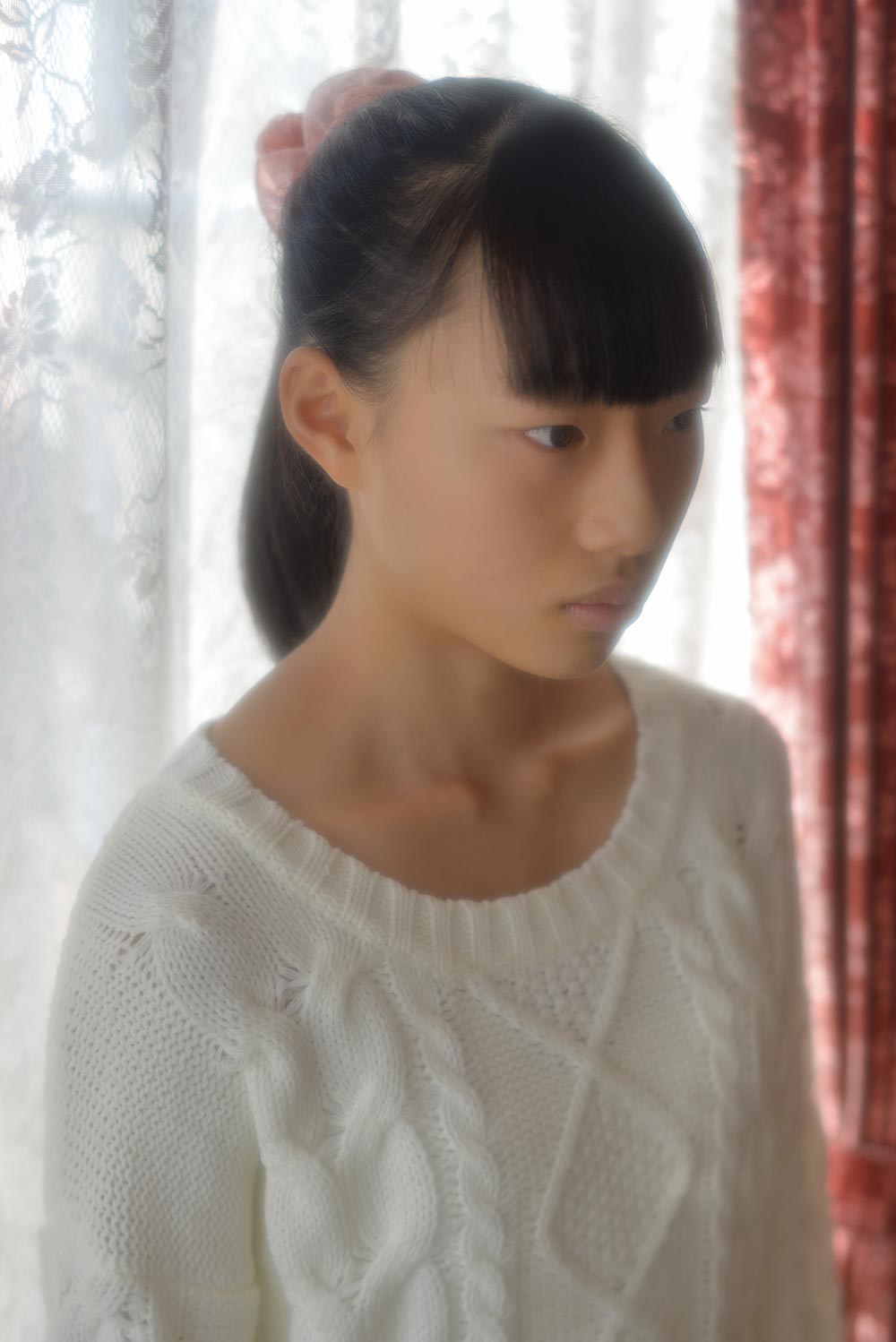
Nikon D800, AF-S NIKKOR 58mm f/1.4G with New Soft Focus Filter
Aperture: f/2.8, Shutter speed: 1/640 s
ISO sensitivity: 200
Image quality: RAW
White balance: Auto
Picture Control: Portrait
Shooting month: November, 2013
A portrait was used for Samples 4-6. Just as with Samples 1-3, we compared the results achieved with the three soft focus filters with a portrait. All of the sample images show softening with beautiful flare and rich and smooth bokeh exhibiting no color cast in highlights. You can also see the superior resolution exhibited by all three filters. Aspects such as resolution in the eyes and flare in the hair and jaw are characteristic of these filters. However, the degree of softening applied by the Soft 2 filter may be a little much for portraits. I think the degree of softening applied by the Soft 1 and New Soft Focus Filters is optimal. I think you will agree that here, too, the results achieved with the Soft 1 and New Soft Focus Filter are quite similar.
VII. The Soft Focus Nikkor-S 105mm f/2.8
Tsunashima's research into soft focus actually began with development of a soft focus lens. Though you probably didn't know it, Nippon Kogaku, as Nikon was once known, had a long history of research into soft focus and bokeh. The proof of this lies in the Soft Focus Nikkor-S 105mm f/2.8, which I will now introduce. Naturally, Tsunashima was the designer of this lens. A design report was submitted in early January of 1967. It should be noted that he began researching soft focus in the very early 1960s. The Nikon F was released in 1959, and it was the 1960s that saw planning and research for the soft focus lens lineup. Endless research into soft focus and bokeh continued with soft focus filters, and by extension, was a driving force behind DC-Nikkor lenses. The age of the Nikkor Auto was a difficult time for Nikon, as these lenses had been labeled as exhibiting poor bokeh. However, Nikon designers and developers began researching bokeh and soft focus before anyone else. They were likely mortified by the label attached to their products.
Now back to the main subject. Trial production and evaluation of this soft focus lens took place in 1966. Unfortunately, it was never released. The photo above is of the only trial product remaining at Nikon. It is possible that it is the only one left in the world. The structure of this lens was a Gaussian structure modified with the addition of a biconcave lens at the middle of the standard six-element structure. It should also be noted that aspherical surfaces were used to achieve soft focus. At that time, aspherical lens elements were manufactured with hand polishing of each individual lens. Though Nikon's OP Fisheye (released in 1968) was the first mass-produced photographic lens to utilize aspherical lens elements, it turns out that though the Soft Focus Nikkor-S 105mm f/2.8 never went past trial production, it introduced technologies that were state of the art at roughly the same time the OP Fisheye was released. Had the Soft Focus Nikkor been released, it may have been the first mass-produced lens to utilize aspherical lens elements.

Now let's look at the aberration characteristics of this lens. The primary feature of this lens is the form spherical aberration takes. It has what is known as full-correction spherical aberration with expansion of approximately -0.1 mm with longitudinal aberration at a light incidence position equal to that of f/5.6 at the f/2.8 maximum aperture. In addition, it has an under-correction form with expansion of an incredible -2.0 mm with longitudinal aberration at a light incidence position equal to that of f/2.8-5.6 at wider apertures. The lens does not exhibit simple spherical aberration, but rather a winding spherical aberration curve. Normally, soft focus lens spherical aberration exhibits a simple increase or decrease in the plus or minus direction.
This is because pleasing bokeh is achieved with a caustic surface (caustic curve) in only one direction. Why did Tsunashima give the spherical aberration this sort of structure? As previously noted, it is because he wanted to reduce, even a little, the decrease in the degree of softening applied when the aperture is stopped down, which is a drawback of soft focus lenses. Therefore, in order to preserve soft rendering at even f/5.6, he made sure that a large amount of spherical aberration was generated at smaller apertures. This spherical aberration also helped to make focusing with the soft focus lens easier. Tsunashima quickly grasped the drawbacks of soft focus lenses, and searched for a technical solution.
Unfortunately, this backfired on him. As a result, the characteristics of soft focus lenses, including pleasing bokeh, deep depth of field, and relatively high resolution were lost completely. By reducing the amount of spherical aberration generated at apertures smaller than f/5.6, point images exhibited a clear core. These were the conditions that achieve deep depth of field and good resolution. In addition, after repeated adjustment of spherical aberration, multiple layers of caustic surfaces (caustic curves) resulted in complicated bokeh. Unfortunately, Tsunashima's ideas were not successful. What's more, as the lens also utilized aspherical lens elements, which were very expensive at the time, it was never released. However, Tsunashima used this experience as a springboard and fully devoted himself to researching soft focus. This research shifted from lenses to filters. Nikon Soft 1 and Soft 2 soft focus filters were the final results.

Nikon Df, Soft Focus Nikkor-S 105mm f/2.8
Aperture: f/2.8, Shutter speed: 1/125 s
ISO sensitivity: 200
Image quality: RAW
White balance: Auto
Picture Control: Portrait

Nikon Df, Soft Focus Nikkor-S 105mm f/2.8
Aperture: f/2.8, Shutter speed: 1/60 s
ISO sensitivity: 200
Image quality: RAW
White balance: Auto
Picture Control: Portrait
Shooting month: November, 2013

Nikon Df, Soft Focus Nikkor-S 105mm f/2.8
Aperture: f/2.8, Shutter speed: 1/200 s
ISO sensitivity: 400
Image quality: RAW
White balance: Auto
Picture Control: Portrait
Shooting month: November, 2013
Difficulties and failures are an integral part of product development. But we have learned from the mistakes of our predecessors and applied those lessons to the development of better products. I hope that this tale has provided insight into the dramatic history of Nikon's soft focus filters.
Lastly, take a look at some sample images taken with the Soft Focus Nikkor-S 105mm f/2.8 (Samples 7-9). Though the degree of softening is rather low, softening of portions that are in focus is very pleasing. I wonder if this lens really was a mistake. What do you think?

NIKKOR - The Thousand and One Nights
The history of Nikon cameras is also that of NIKKOR lenses. This serial story features fascinating tales of lens design and manufacture.

